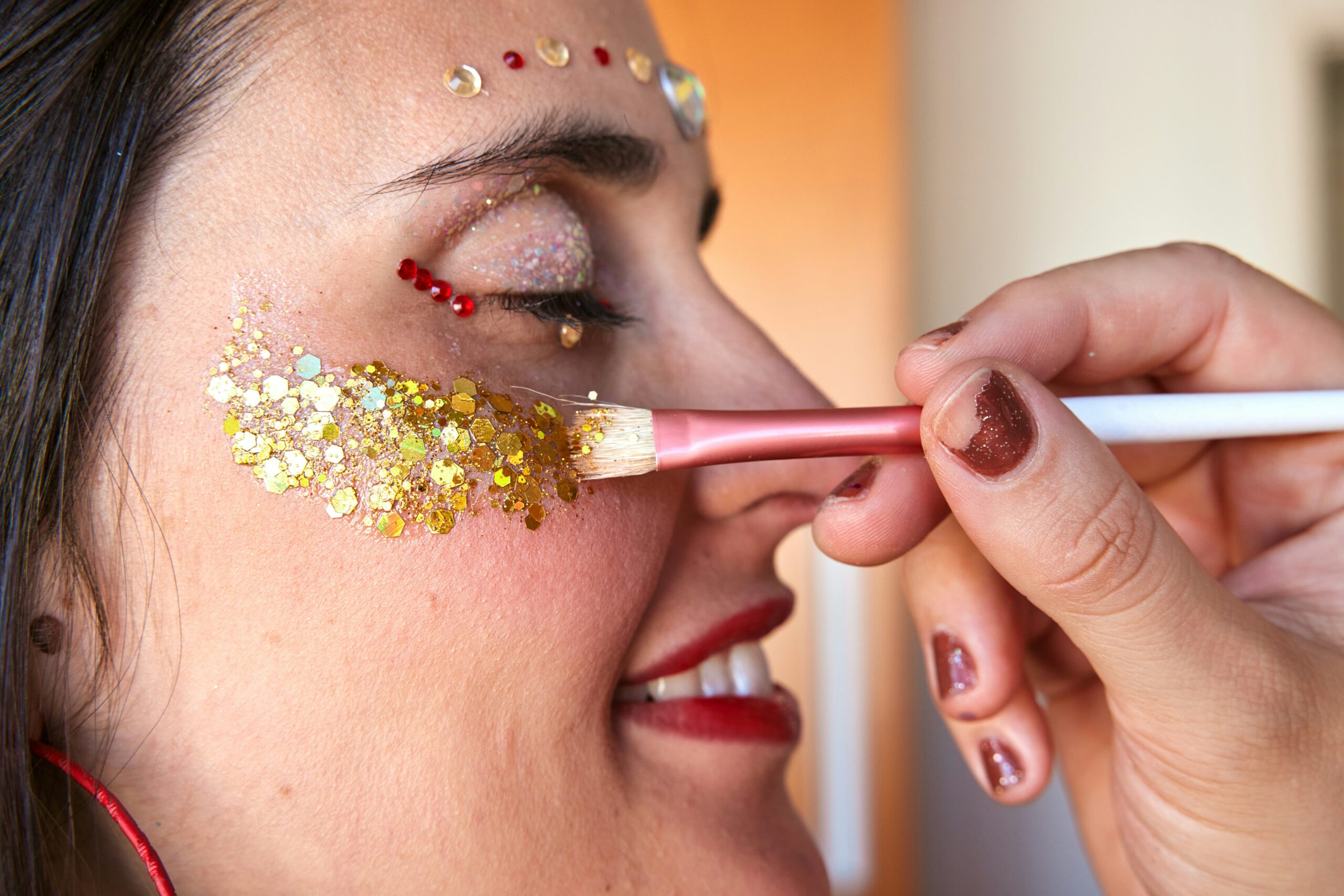While bringing your baby into the world is probably the most incredible thing you’ve experienced, the postpartum recovery is well, far less exciting. Postpartum is a time when your body is trying to heal and recover, your hormones are haywire and you’re trying to adjust to your new life caring for a newborn. While you’ve heard the common tips like drink plenty of water, and ‘sleep when the baby sleeps’—it may all feel a little too stilted, stale or unrelatable. After all, when you’re changing your third blowout diaper of the day, leaking breast milk and crying, you may not feel up for chugging some H20. We feel ya—and we’ve been there.
What can be helpful are motivating and actionable postpartum tips you’ve never heard of before—the ones that aren’t mentioned in the mommy blogs or from your doctor but can actually make a noticeable difference in how you feel emotionally and physically. We’ve gathered advice from moms who’ve been through it and what made their recovery a better experience.
Whether you’re a first-time mother nervous about what postpartum recovery will look like for you, or you’ve been through it before and want to have some new strategies to help, these postpartum recovery tips will help you navigate the recovery process with a little more ease and confidence.
- Unique Physical Postpartum Recovery Tips
- Innovative Tips for Emotional Well-Being
- Dietary Hacks for Faster Postpartum Healing
- Pelvic Floor and Core Recovery Techniques You Haven’t Tried
- Postpartum Sleep and Rest Strategies
- Alternative Postpartum Recovery Tips and Practices
- Real Stories from Mothers Who Used Unique Recovery Tips
- Self-Care Tips to Prioritize During Postpartum Recovery
Unique Physical Recovery Tips
Let’s start with some unique postpartum recovery tips for the physical side of recovery which we know is no walk in the park. You’re bleeding, your C-section scar is healing and itchy, and you may even be sore from the IV in your arm. These tips go beyond the basics, providing new ways to support your body’s healing process.
Use a Belly Band for Core Support
A postpartum belly band can be great for supporting your core. These bands are not for making you look slimmer—they are intended to help heal your abdominal muscles, heal diastasis recti and improve your posture. If you’re wondering how to use a belly band safely, consult with a pelvic floor therapist. They can explain how a belly band can offer gentle core support without over-straining your muscles.
Book a Lymphatic Drainage Massage
A lymphatic drainage massage might seem like something that will take up too much time when you’re caring for your newborn, but it’s actually a gentle technique that can help your body get rid of excess fluids after childbirth or bleeding after birth, reduce swelling and improve circulation —all things your body needs during this time. You can try simple self-massage techniques by watching YouTube videos or asking your healthcare provider or doula for local recommendations. Alternatively, you can book a professional massage and give yourself permission to get out of the house—even just for a few hours.
Take Magnesium for Muscle Recovery
Magnesium supplements can help ease any muscle soreness or cramps that you experience postpartum, just like they did during pregnancy. Magnesium might become your best friend since it also has the added benefit of supporting healthy sleep patterns. (At least for those two and three-hour increments between infant feeds!) A nutritionist can help you figure out the best ways to incorporate magnesium into your diet, whether that’s through your meals or supplements.
Yoni Steaming for Postpartum Healing
Yoni steaming is something that’s been around for centuries—and is believed to promote healing by increasing circulation to the perineal area and supporting uterine health. You sit over herbal-infused steam, which helps with your postpartum recovery especially after a vaginal birth or bleeding after birth. While this method is an ancient practice, it is still essential to consult with an expert on what to know before giving it a try.
Acupuncture for Pain Relief and Emotional Balance
Acupuncture is a traditional Chinese medicine practice that can help in your postpartum recovery. It can help alleviate postpartum pain, balance hormones and reduce anxiety. Thin needles are inserted into specific points of your body to promote healing. An acupuncturist can explain how acupuncture works, the benefits for postpartum recovery, and how it supports overall well-being.

Innovative Tips for Emotional Well-Being
While the physical aspect of postpartum recovery is a large part of the process, your mind and emotional well-being also took a large hit. During the fourth trimester, you are experiencing one of the most significant hormone drops of your life—the only bigger dive is menopause. These tips focus on emotional and mental health during the postpartum period.
Incorporate Aromatherapy into Your Routine
Aromatherapy is a simple yet very effective way to soothe your mind and improve your emotional well-being during recovery. With essential oils like lavender, chamomile and frankincense can help promote relaxation, reduce anxiety and improve your mood during postpartum recovery—which can make a huge difference in your recovery process. You can drop a few drops of oil into a diffuser or infuse it in your self-care products like lotion or body wash.
Try Postpartum Journaling
Another way to help your mind during this time is to try journaling. Writing down your fears, thoughts and emotions can help you process your feelings, after all becoming a mother comes with its own laundry list of new emotions. Journaling can be a great way to not only help process the complex feelings of new motherhood but also track your recovery journey. There are so many ups and downs of postpartum life. From highs like seeing your baby laugh or smile for the first time to lows like struggling to breastfeed or get any sleep, journaling can help be an outlet for releasing your feelings about motherhood.
Practice Grounding Exercises for Emotional Stability
Grounding exercises can be a game changer for keeping your postpartum anxiety and stress in check. Doing things like deep breathing and practicing mindfulness for a few minutes a day can help reduce any anxieties you may have. Try to incorporate these into your daily routine. If you wake up before the baby, practice a few minutes of mindfulness or deep breathing before you get your day started. Or, if you need a minute to collect yourself when your baby is having a meltdown, give yourself permission to put them somewhere safe (like their crib or bassinet), step out of the room, and go through a grounding exercise. It can help you focus on the present moment and feel more emotionally stable during the day.
Focus on Small Daily Rituals
We know when you have a newborn, your needs are put on the back burner. So, doing small daily rituals can ensure that you’re not taking too much time away but still supporting yourself. Whether it’s a five-minute meditation, enjoying a cup of hot tea or simply taking a few deep breaths, these little moments can help you feel more grounded.
Celebrate Milestones in Your Healing
“Postpartum recovery looks different for every new mother, and according to a study by Anya, most moms report that it lasts at least a year. Understanding that recovery takes time can help relieve the pressure to “bounce back” quickly, a pressure often imposed by societal expectations,” Baecher said. “According to Stanford research, new parents take on an additional 300 tasks per day. That’s mind-blowing! With this in mind, it’s crucial to give yourself grace and patience as you adjust to your new role.”
Build a Supportive Recovery Tribe
Surrounding yourself with a supportive group of friends, family or fellow moms who understand the ups and downs of postpartum recovery can also be such a powerful way to help your recovery. Having people to lean on, whether it’s to help out with the baby so you can take care of yourself or just need a listening ear, the people closest to you want to help. We know postpartum recovery is no easy feat. To put it bluntly, it’s more complicated than you think. But with these postpartum recovery tips, we hope your journey is just a little bit easier.

Dietary Hacks for Faster Postpartum Healing
What you eat can have a major impact on your postpartum recovery. These tips go beyond traditional advice to fuel your healing in unique ways. Because let’s be real, you’re probably running on fumes because you don’t have time to cook for yourself.
Try Bone Broth for Collagen and Nutrient Support
Drinking bone broth has so many benefits for the body, especially during postpartum recovery. Bone broth is a soup made from boiling animal bones with other ingredients. It can help with increasing collagen, which supports tissue repair and joint health. It’s also rich in essential nutrients like protein and potassium that help the body heal after childbirth. Here are some of our favorite bone broth recipes and pre packaged options from Amazon:
- The Forked Spoon Bone Broth Recipe
- Martha Stewart Bone Broth Recipe
- Kettle and Fire Bone Broth
- Swanson Sipping Bone Broth
Incorporate Omega-3s for Mental and Physical Health
Incorporating omega-3 fatty acids can also do loads for your recovery. Omega-3 fatty acids can help reduce inflammation, support brain health and even improve your mood during the postpartum period. You can find omega-3s in fatty fish like salmon, as well as in plant-based sources like flaxseeds and chia seeds. If those aren’t your taste, you can find omega-3 supplements to take daily. A nutritionist can help you create a plan and find the best sources of omega-3s to fit your lifestyle.
“Studies show a direct link between adequate levels of these nutrients and a lower risk of postpartum depression. Ensuring you’re supplementing with high-quality vitamins that maintain healthy blood levels of vitamin D and Omega-3 can be your first line of defense against PPD,” Jane Baecher, CEO and co-founder of Anya, a line of postpartum-specific products for healing, said.
Include Foods Rich in Vitamin C for Tissue Repair
Try to eat foods rich in vitamin C, which helps collagen build-up. If you suffered a tear or episiotomies during your birth experience, eating vitamin C-rich foods can help speed up the healing process. Adding foods like citrus fruits, bell peppers and strawberries into your postpartum diet can make a significant difference in your body’s recovery time. Plus vitamin C also supports your immune system, which is important for those early weeks with your newborn.
Consider Placenta Encapsulation for Hormonal Balance
Never heard of placenta encapsulation? Essentially, it involves steaming, dehydrating, grounding and placing your placenta into a pill that is then ingested. Some women choose placenta encapsulation to potentially help balance hormones and reduce postpartum depression. If you’re interested in this, you should consult with a specialist in placenta encapsulation who can explain the process, potential benefits and precautions for this practice.
“When my water broke, I made sure I made my Chinese herbal tea before going into the birthing center. I’ve been in Chinese medicine for 26+ years…oh, the things I’ve seen. This formula helps pull the uterus up, nourishes the blood and gives the mom’s body (and baby if breastfeeding) so much love,” Summer Latino, the founder of Chi Works, shared how a Chinese herbal tea aided her postpartum recovery. “In all my years of making this tea, there has never been a single mom who experienced postpartum depression when they drank this formula,” she said.
Pelvic Floor and Core Recovery Techniques You Haven’t Tried
Your pelvic floor is so important in your postpartum recovery. You might not think it, but is has a huge role in gaining your body’s strength back. These pelvic floor and core recovery strategies go beyond the standard Kegels. They offer fresh approaches to strengthening and healing your body post-birth.
Try Pelvic Floor Relaxation Exercises
You might have heard a lot about needing to strengthen your pelvic floor after birth, but knowing how to relax those muscles is just as important, and it’s also a great place to start. Instead of only focusing on contracting the pelvic floor, learning to relax and lengthen these muscles can help alleviate tension and pain, particularly after a traumatic birth. If you don’t know where to start, a pelvic floor therapist can help share specific relaxation techniques that will help your body release tension and encourage healing in your pelvic floor.
Use Diaphragmatic Breathing to Restore Core Function
Diaphragmatic breathing, also called deep belly breathing, can also do wonders for your body. It helps restore the connection between your diaphragm and pelvic floor muscles which promotes gentle core recovery. Essentially, belly breathing helps your body naturally re-engage these muscles without straining. Try adding a few minutes of this each stay to gradually rebuild your strength in your pelvic floor and core. Plus, this breathing can help you take a few minutes to relax and reduce any stress you may have.
Explore Myofascial Release for C-Section or Tear Healing
If you had a C-section or experienced vaginal tearing, myofascial release can help your recovery in these areas. Myofascial release techniques can help break up scar tissue and restore mobility in areas affected. Typically, this is done through the help of a therapist, who will apply light pressure on myofascial areas. The therapist will gently feel your myofascial tissue areas that are stuff or tight. They’ll then stretch and massage these areas to eliminate any tension or knots. To find a therapist near you, consult with your healthcare provider or look up clinics nearby.

Postpartum Sleep and Rest Strategies
Sleeping with a newborn isn’t realistic for most moms. Even when you try to rest, you might be so worried about your baby or what you have on your to-do list. These lesser-known tips can help you maximize your rest and recovery.
Nap in Shorter, Frequent Bursts
We know it might be ideal to have a long stretch of sleep, but being a mother and trying to achieve that is not just realistic. Instead, you should focus on frequent power naps throughout the day to align with your baby’s sleep patterns. You hear it all the time, but it’s true: when the baby sleeps, you sleep! Napping in shorter intervals can help you feel more rested and less overwhelmed throughout the day. Think of these as mama power naps.
Create a Sleep Sanctuary
Where you sleep should be a place where you can truly relax. Blackout curtains, white noise machines and incorporating relaxing scents into your bedroom can help turn it into a sleep sanctuary where you can get deep and restorative sleep. Where you sleep should feel like the comfiest and most relaxing place in the world. So putting in a little effort to make it feel like a sleep sanctuary can help you make the most of your rest.
Try Progressive Muscle Relaxation Before Sleep
Progressive muscle relaxation is a simple technique you can try or ask your therapist to incorporate. Essentially, you tense your muscles and release them after holding for a few seconds. This can actually help your body wind down and prepare for deeper sleep. You can try doing this before you sleep, or even before a mama power nap, to help get better quality rest.
Author
-

Esha Minhas is a third-year student at Northeastern University studying Journalism and Political Science. She's currently the editorial and social intern for Mila & Jo Media. Esha is also the Deputy Sports Editor for The Huntington News and covers Northeastern men's hockey. When she's not busy with work or school, you can find her at the gym, baking for her friends and family and watching anything sports related.
View all posts




